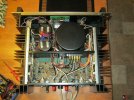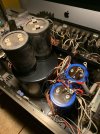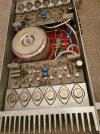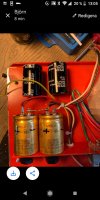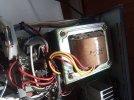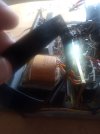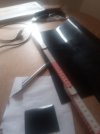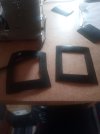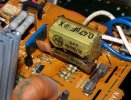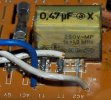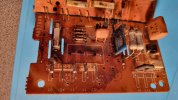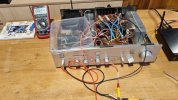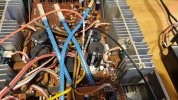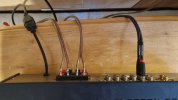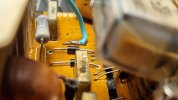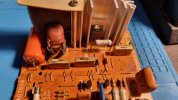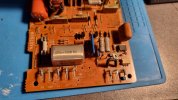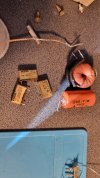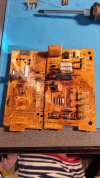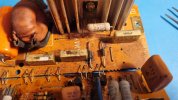BogdanSava
Member
- Joined
- Jan 14, 2025
- Messages
- 9
- Likes
- 10
Hello. This is my first post here and my first amp. I am just starting in this hobby and I need some guidance 
I got a Yamaha A760 in pretty good shape, it does smell like tobacco but I hear that is a standard feature of any amp from the 80s.
I do a lot of automotive electronics repair and some gpu/motherboard repair/bga reballing so soldering anything is not a problem.
This Amp has a infamous Rifa 0.47uF 250VAC RFI capacitor that exploded, I ordered a new part Kemet P409 to replace it.
So I was thinking, since I am opening it up to replace the cap and clean everything, I could do some upgrades.
Maybe upgrade the big 6800uF 63V capacitors with 10000uF 63V ones, or more importantly upgrade the opamps.
It has JRC NJM4558D/NJM4559D and I was reading about OPA2134, OPA1642 or OPA1656. I don't mind soldering a socket and using an adapter for smd opamps.
The thing is I have no idea if that would improve or lower the sound quality. I tried reading about opamp upgrades and people say that a certain opamp might sound good on one amp and not as good on another. So if anyone here has some experience with upgrading vintage amps or general knowledge about the subject I would appreciate the help.
I have a pair of Sony SS-CS5 as speakers. I don't mind getting better speakers down the line, but I want to gain a little knowledge before I start buying more expensive stuff.
Thank you
I got a Yamaha A760 in pretty good shape, it does smell like tobacco but I hear that is a standard feature of any amp from the 80s.
I do a lot of automotive electronics repair and some gpu/motherboard repair/bga reballing so soldering anything is not a problem.
This Amp has a infamous Rifa 0.47uF 250VAC RFI capacitor that exploded, I ordered a new part Kemet P409 to replace it.
So I was thinking, since I am opening it up to replace the cap and clean everything, I could do some upgrades.
Maybe upgrade the big 6800uF 63V capacitors with 10000uF 63V ones, or more importantly upgrade the opamps.
It has JRC NJM4558D/NJM4559D and I was reading about OPA2134, OPA1642 or OPA1656. I don't mind soldering a socket and using an adapter for smd opamps.
The thing is I have no idea if that would improve or lower the sound quality. I tried reading about opamp upgrades and people say that a certain opamp might sound good on one amp and not as good on another. So if anyone here has some experience with upgrading vintage amps or general knowledge about the subject I would appreciate the help.
I have a pair of Sony SS-CS5 as speakers. I don't mind getting better speakers down the line, but I want to gain a little knowledge before I start buying more expensive stuff.
Thank you


